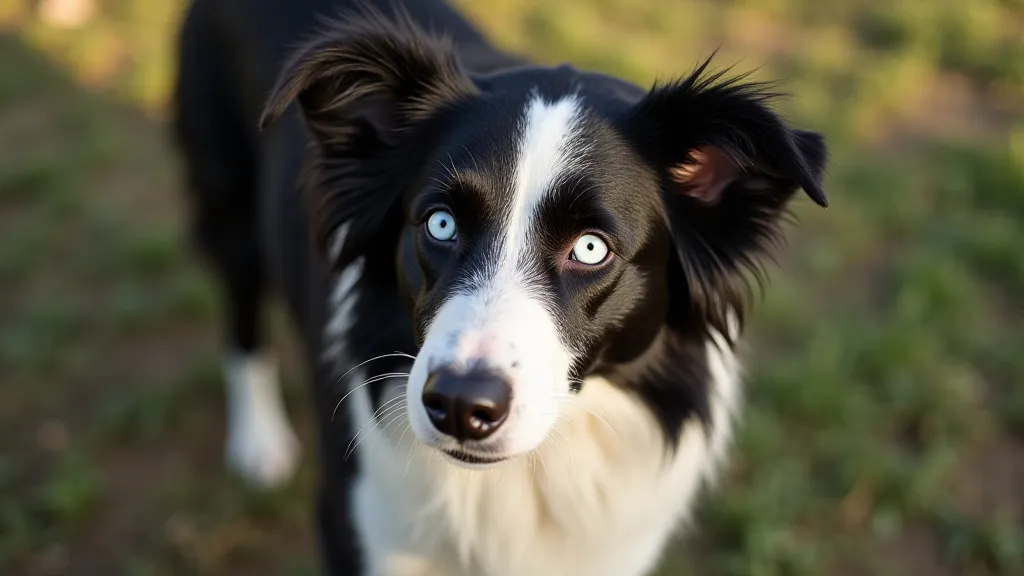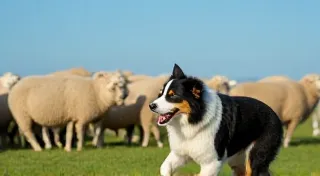Decoding Dog Body Language: Understanding What Your Dog is Trying to Tell You
Ever wonder why your dog wags its tail a certain way or why it freezes in place? Understanding dog body language is crucial for building a strong bond, resolving behavioral issues, and ensuring your dog’s well-being. This article dives deep into the nuances of canine communication, explaining common signals and helping you interpret what your furry friend is trying to tell you.
Why is Understanding Dog Body Language Important?
Dogs don't speak our language, but they are constantly communicating. Their body language provides valuable insights into their emotional state – whether they're happy, scared, anxious, or relaxed. Recognizing these signals allows you to respond appropriately, avoid potentially stressful situations, and build a deeper, more harmonious relationship. It’s a vital component of responsible pet ownership and effective dog training. Sometimes, a dog’s behavior stems from nutritional deficiencies or anxieties related to their environment. Ensuring they’re on a balanced diet can be a foundational step. You can find valuable information about dog food nutrition and what to look for in a balanced diet to support their overall well-being and, in turn, their communication.
Common Dog Body Language Signals: A Comprehensive Guide
Let's break down some of the most frequently observed dog body language signals:
Tail Wags – More Than Just Happiness!
The classic tail wag isn’t always a sign of joy! While a wide, loose wag generally indicates happiness and excitement, the speed, direction, and position of the tail offer important clues. A high, stiff wag can signify alertness or even tension. A tail tucked between the legs signals fear or anxiety. Consider the *entire* body posture when interpreting a tail wag.

Ear Positions: Attentiveness and Mood
A dog's ears are incredibly expressive. Ears pricked forward show alertness and interest. Ears flattened against the head can indicate fear, submission, or anxiety. Relaxed, naturally positioned ears generally mean the dog is feeling calm.
Eye Contact & Staring
Direct, sustained eye contact can be interpreted as a challenge by some dogs, especially in unfamiliar situations. Averting the eyes is often a sign of submission or an attempt to diffuse tension. The 'whale eye' – showing the whites of the eyes – is often a sign of discomfort or anxiety. Observe the other body parts as well.
Lip Licking and Yawning
While lip licking can be associated with hunger, it frequently signals stress or anxiety. Yawning, outside of tiredness, is another common displacement behavior associated with stress. These subtle signals are easily overlooked, but can be important indicators of underlying discomfort.
Body Posture – The Whole Picture
Pay attention to the dog's overall posture. A relaxed dog will have loose muscles, a neutral head position, and a comfortable stance. A tense dog will have stiff muscles, a rigid posture, and may be braced for action. A lowered body posture can indicate submission or fear.
Panting – Beyond Heat
While panting is a natural way for dogs to regulate their body temperature, excessive panting can also be a sign of stress or anxiety. Consider the context: Is the dog overheating? Or is something else causing the panting?

Recognizing Stress Signals
Being able to identify signs of stress in your dog is critical for preventing behavioral issues and protecting their well-being. Common stress signals include:
- Yawning (when not tired)
- Lip licking
- Whale eye
- Tucked tail
- Panting (when not hot)
- Trembling
- Excessive shedding
- Pacing
Practical Examples & How to Respond
Let’s look at a few scenarios and how to interpret your dog’s body language:
- Scenario: Your dog is approached by a stranger, and their tail is tucked, ears are flattened, and they’re licking their lips. Interpretation: Your dog is feeling anxious and wants to avoid interaction. Response: Create distance between your dog and the stranger. Don’t force interaction. This situation highlights the importance of proper socialization during puppyhood. A well-socialized puppy is more likely to approach new people and situations with confidence. You can find more details about the ultimate guide to puppy socialization and how to set your pup up for success, ensuring they develop the confidence to navigate social encounters.
- Scenario: Your dog is playing with another dog, and their tail is wagging widely, they're bowing playfully, and their body is loose. Interpretation: Your dog is enjoying the interaction and is in a playful mood. Response: Allow the play to continue, monitoring for signs of stress or escalation.

Expanding on Specific Signals: Deeper Insights
Let's dive deeper into some key signals. For instance, the 'whale eye' isn't just about discomfort; it’s often a precursor to a potential outburst. Understanding this can help you intervene *before* a growl or snap occurs. Similarly, a dog that’s frequently lip-licking or yawning in seemingly neutral situations may be experiencing chronic low-level stress that warrants investigation—perhaps due to environmental factors, lack of mental stimulation, or even subtle anxieties. Addressing these anxieties often requires a comprehensive approach. While dietary adjustments are important, sometimes a behavioral issue stems from a lack of appropriate socialization and training. Consider consulting with a professional trainer or behaviorist for personalized guidance.
The Role of Breed and Individual Personality
While these signals are generally consistent across dog breeds, it’s important to remember that individual dogs have unique personalities and communication styles. A naturally submissive breed, like a Basset Hound, might display more frequent signs of deference, while a more assertive breed, like a German Shepherd, might communicate confidence more openly. Individual experiences also play a huge role; rescue dogs with traumatic pasts may exhibit heightened anxiety and require extra patience and understanding. Furthermore, a dog’s breed predispositions can influence how effectively they respond to training – some breeds learn quickly, while others need more creative and motivating techniques.
Canine Communication: Beyond Body Language
Let’s explore how dogs also communicate with us! Besides subtle body language, dogs use vocalizations and scent markings to convey messages. Growls, whimpers, and barks can indicate fear, pain, or excitement, depending on the context. These nuanced communications often intertwine with their body language, enriching the overall meaning. For example, a low growl accompanied by a tense posture and tucked tail conveys a clear warning.
The Role of Context
Interpreting dog body language isn't just about recognizing individual signals; it's about understanding the broader context. The environment, the presence of other people or animals, and the dog’s recent experiences all influence their communication. A dog might exhibit relaxed body language in their home but become anxious in a crowded park.
Recognizing and Addressing Anxiety
Anxiety is a pervasive issue affecting dogs of all ages and breeds. Recognizing the subtle signs of anxiety, such as excessive licking, panting, and shaking, is crucial for intervention. In some cases, medication might be necessary to manage severe anxiety. Alongside medical intervention, environmental adjustments and behavioral modification techniques can help reduce anxiety levels. Seeking guidance from a certified veterinary behaviorist can provide personalized strategies to address anxiety effectively.
Tailoring Your Response to Your Dog
Every dog is an individual with their own preferences and communication style. Pay close attention to your dog’s responses to your actions and adjust your approach accordingly. Some dogs might enjoy physical affection, while others might prefer verbal reassurance. By understanding your dog’s unique personality and preferences, you can strengthen your bond and create a more harmonious relationship.
Building a Stronger Bond Through Understanding
Learning to understand your dog’s body language is an ongoing process. It requires patience, observation, and a willingness to learn. As you become more attuned to your dog’s communication style, you'll develop a deeper connection and strengthen your bond. This heightened understanding fosters trust and creates a more fulfilling relationship for both you and your furry companion. Remember to always prioritize positive reinforcement and avoid punishment, as this can damage your bond and lead to anxiety and fear.
Beyond the Basics: Advanced Communication Skills
Once you’re comfortable recognizing the basic body language signals, you can start exploring more advanced communication skills. Observe how your dog interacts with other dogs and people, and learn to interpret their subtle cues. This will help you anticipate their behavior and prevent potential conflicts. You can also learn to communicate with your dog using nonverbal cues, such as hand signals and facial expressions. This can be particularly useful for dogs who are deaf or hard of hearing.





